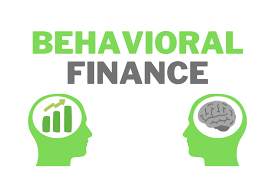
14. Behavioral Finance Technology
Behavioral Finance Technology
Introduction
In the intricate world of finance, understanding human behavior is as crucial as analyzing market trends and economic indicators. Behavioral finance technology has emerged as a transformative force, leveraging insights from psychology and behavioral economics to illuminate the intricate tapestry of human decision-making in financial contexts. This blog aims to explore the realm of behavioral finance technology, unraveling how advanced technologies are being employed to decode and navigate the complexities of human behavior within the financial landscape.
1. Foundations of Behavioral Finance:Behavioral finance, rooted in the understanding that individuals often deviate from rational decision-making, explores the psychological factors influencing financial choices. This section will provide a brief overview of the key principles of behavioral finance, such as cognitive biases, heuristics, and emotional influences, laying the groundwork for the technological innovations that address these human nuances.
2. Big Data and Predictive Analytics::The advent of big data has ushered in a new era in behavioral finance technology. This section will delve into how vast amounts of data are collected, processed, and analyzed to identify patterns in investor behavior. Predictive analytics algorithms utilize this data to anticipate market trends, investor sentiment, and potential anomalies, providing valuable insights for financial decision-makers.
3. Machine Learning in Portfolio Management:Machine learning algorithms, a subset of artificial intelligence, are revolutionizing portfolio management by adapting to evolving market conditions and learning from historical data. This segment will explore how machine learning enhances portfolio optimization, risk management, and asset allocation strategies. The blog will discuss specific applications, such as robo-advisors, that use machine learning to tailor investment recommendations based on individual investor profiles and market conditions.
4. Sentiment Analysis and Social Media: Behavioral finance technology extends its reach into the realm of social media, where sentiments and opinions can influence market dynamics. Sentiment analysis tools use natural language processing and machine learning to gauge public sentiment on social media platforms. This section will explore how these tools are employed to assess investor sentiment, identify market trends, and anticipate potential shifts in market behavior.
5. Neurofinance and Biometric Technologies: Neurofinance employs neuroscience and biometric technologies to directly measure physiological responses to financial stimuli. This segment will delve into how technologies like EEG (electroencephalography) and eye-tracking are used to analyze investors’ cognitive processes and emotional reactions. The blog will discuss the potential of neurofinance in providing real-time insights into decision-making processes and its applications in refining financial products and services.
6. Behavioral Economics in User Interface Design : User interface design plays a pivotal role in shaping user behavior in financial platforms. Behavioral economics principles are integrated into the design of user interfaces to influence decision-making. This section will explore how technology incorporates concepts like choice architecture and nudges to guide users toward making more informed and rational financial decisions.
7. Personalized Financial Education Platforms : Behavioral finance technology isn’t solely focused on predicting market trends; it also plays a crucial role in educating and empowering individuals. Personalized financial education platforms leverage technology to cater to individual learning styles and preferences. This segment will discuss how adaptive learning algorithms and interactive tools enhance financial literacy by addressing specific cognitive biases and behavioral tendencies.
8. Algorithmic Trading and Behavioral Alpha : Algorithmic trading strategies have evolved to incorporate insights from behavioral finance, aiming to exploit market inefficiencies resulting from irrational behavior. This section will explore how algorithmic trading models, informed by behavioral finance principles, seek to gain a behavioral edge or “behavioral alpha” by anticipating and capitalizing on patterns influenced by human behavior.
9. Challenges and Ethical Considerations: As behavioral finance technology continues to advance, it faces challenges related to data privacy, algorithmic biases, and ethical considerations. This segment will discuss the importance of addressing these challenges to ensure the responsible and fair application of behavioral finance technology. It will also explore the role of regulations and industry standards in mitigating potential risks.
Conclusion
In the ever-evolving landscape of finance, behavioral finance technology stands as a beacon, illuminating the human element in decision-making. From big data analytics to neurofinance, the fusion of technology and behavioral insights is reshaping how we perceive, analyze, and navigate financial markets. As we continue on this technological journey, understanding the intersection of human behavior and finance becomes not just a tool for predicting market trends but a fundamental aspect of creating a more informed, equitable, and user-centric financial ecosystem.
Leave a Reply